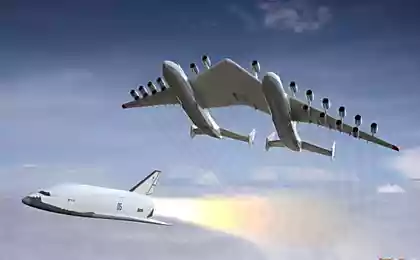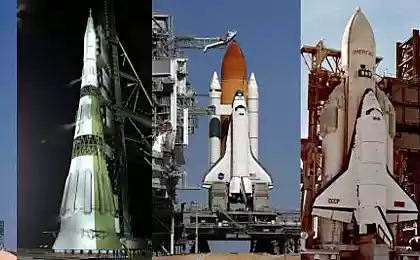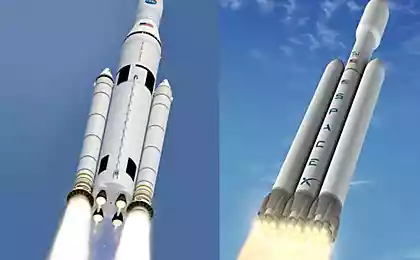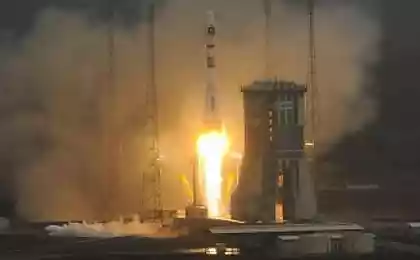574
NASA launched the satellites with missiles launched from aircraft

Needle in egg, egg in a duck, a duck in a hare, hare... Well, you remember all that, right? NASA is unlikely that many employees heard about the Bones, but multi-stage principle of operation of the various systems they use often. Now, the Agency has successfully launched a constellation of satellites system Cyclone Global Navigation Satellite System (CYGNSS) missile, which, in turn, were launched from the aircraft.
Rocket-launch it was decided to use the media L-1011 Stargazer. A plane that soared to a height of 12 kilometers. Here it undocked from the Orbital ATK rocket Pegasus XL. The next stage is a free fall missiles within five seconds, with subsequent activation of the primary motor, which made a rocket with several satellites in Earth's orbit.
Later, 14 minutes after launch, the Pegasus rocket was sent "to work" your payload. This occurred at an altitude of 508 kilometers above the planet's surface.
Payload — a special delivery capsule, which was placed satellites. At a given height they undocked from the parent unit and began to perform the functions.
It should be noted that this entire project cost the Agency $157 million. NASA, despite the huge budget allocated by a special Commission of the Congress, would be unable to accomplish the task. So it took the help of partners. They were the Michigan Institute and the southwest research Institute in San Antonio.
Originally the launch of the plane with a missile, the capsule and the satellites were scheduled for Monday. But had to miss three days because of a problem with the hydraulic system undocking missiles, and also more prosaic reason — Monday was unsuitable for launching the weather.
The eight CYGNSS satellites will now study the meteorological and climatic conditions of several regions of our planet. For example, the devices will help determine the intensity of hurricanes and tropical cyclones with an unprecedented real time accuracy. The satellites will be monitored only for the area where tropical storms occur, this project is not provided for monitoring other areas.
On Board each satellite CYGNSS set Delay Doppler Mapping Instrument (display of radar data from Doppler frequency shift), which involves multi-channel GPS receiver, antenna, anti-aircraft low gain and 2 Nadir port antenna with high gain. These tools allow machines to detect and measure reflected from the surface of the oceans, the signals of GPS satellites. In the case of the hurricane, the radio signals will be able to give an idea of wind speed in this region, and the configuration of the hurricane. Satellite system can hold 32 measurements per second, providing unprecedented accuracy of intensity estimates of hurricanes. Direct signals from the satellites also catch and determine the exact location of the spacecraft in outer space.
Thanks to a new system professionals can analyze the development of hurricanes, being away from them. "We can know the wind speed while out the storm with our systems," said climatologist Chris RUF (Chris Ruf). RUF — supervisor of the CYGNSS mission. According to him, the knowledge base of climate scientists about the hurricane incomplete, and satellites will help to fill this gap.
The task of the satellites is not only the definition of the wind force. Devices should study the mutual influence of the ocean surface, thermodynamics, atmospheric humidity, radiation, and convective dynamics. It is necessary to determine the conditions of formation of tropical hurricanes. Method, according to experts, will allow to determine in each case whether the hurricane to gain strength or not. Scientists can study the processes occurring near the core of storms, which is impossible when using direct observation. The processes occurring in the center, very rapidly changing, but they play a crucial role in the development of a hurricane.
The project started in June 2012. Each of the satellites weighs 27.5 pounds. Satellites evenly dispersed in the same orbital plane, this allows them to return to the starting point of observation every 6 hours. The monitoring hurricanes will be conducted for two seasons.
CYGNSS is the first completed mission of NASA under the NASA Earth Venture. This program includes projects that can be quickly developed, and the cost of which is billions of dollars. The main goal of the program is the study of the current state of our planet, including the atmosphere and hydrosphere in order to learn to predict possible changes, e.g. climate.
Source: geektimes.ru/post/283796/























